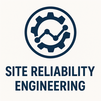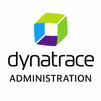
The SailPoint IdentityNow Training course offers a comprehensive introduction to the IdentityNow platform, a leading cloud-based identity governance solution. Participants will learn how to manage user identities, applications, and data access effectively. The course covers core functionalities such as password management, access certification, and policy enforcement. Through hands-on exercises, attendees will gain the skills needed to implement and administer IdentityNow, ensuring compliance and security within their organizations.
SailPoint Identity Now Interview Questions - For Intermediate
1. What is SailPoint?
SailPoint is an identity and access management provider offering solutions for password management, compliance, and provisioning activities for various applications in both on-premises and cloud environments.
2. What is the purpose of Lifecycle Manager in SailPoint?
The Lifecycle Manager module in SailPoint allows businesses to manage changes in user access throughout an individual's tenure in the organization, covering everything from onboarding to offboarding.
3. How does SailPoint integrate with other systems?
SailPoint integrates through its built-in connectors, which support the aggregation and provisioning of identity-related data across systems.
4. What are common use cases for SailPoint?
Common use cases include identity governance, password management, compliance management, and automated provisioning and deprovisioning of user access.
5. Can you explain ‘Role-Based Access Control’ (RBAC) in SailPoint?
RBAC in SailPoint regulates access to systems based on user roles within an organization, ensuring fine-grained access control and adherence to the principle of least privilege.
6. What is the significance of policies in SailPoint?
Policies in SailPoint are critical for defining rules and regulations around access control, helping to ensure compliance and mitigate risks associated with inappropriate or excessive access.
7. What is 'Separation of Duties' (SoD) in SailPoint?
SoD is a policy implemented in SailPoint to prevent any single individual from controlling all phases of a critical or sensitive operation, thus enhancing security and preventing fraud.
8. How is auditing managed in SailPoint?
SailPoint provides robust auditing capabilities through its reporting and analytics features, enabling the documentation and tracking of all identity-related activities for compliance purposes.
9. What are the career prospects after completing SailPoint certification training?
After certification, roles such as SailPoint Consultant, SailPoint Administrator, Identity and Access Management Specialist, and SailPoint Implementation Engineer are common career paths.
10. What is provisioning in SailPoint?
Provisioning in SailPoint involves creating, updating, and deleting user access to various systems and applications, based on predefined roles and policies.
11. What is deprovisioning?
Deprovisioning is the process of removing access rights from users, typically when they leave the organization or change roles, ensuring security and compliance by minimizing unnecessary access.
12. How does SailPoint handle password management?
SailPoint offers a password management solution that allows users to reset their passwords securely across various systems, enforcing strong password policies to ensure security.
13. What are connectors in SailPoint?
Connectors in SailPoint are used to integrate with various systems and applications, facilitating the aggregation, synchronization, and provisioning of identity data.
14. Can you explain the concept of automated provisioning in SailPoint?
Automated provisioning in SailPoint refers to the automated assignment and management of access rights based on business roles, policies, and approval workflows, streamlining the process and reducing manual intervention.
15. What role does AI and machine learning play in SailPoint?
AI and machine learning in SailPoint enhance identity governance by providing predictive insights, automating risk-based decisions, and improving efficiency in managing identities and access rights.
16. What is compliance management in SailPoint?
Compliance management in SailPoint involves monitoring and enforcing compliance with internal and external regulations through automated access reviews, policy management, and reporting.
17. How does SailPoint support cloud environments?
SailPoint supports cloud environments through its identity governance capabilities, allowing organizations to manage access to cloud-based applications and infrastructure securely.
18. What is IdentityIQ?
SailPoint IdentityIQ is an on-premises solution designed to offer comprehensive identity governance through integrated provisioning, compliance controls, and access management.
19. What is the difference between IdentityIQ and IdentityNow by SailPoint?
IdentityIQ is typically deployed on-premises and provides broad identity governance capabilities. In contrast, IdentityNow is a cloud-based solution offering similar features but designed for easy integration with cloud applications and infrastructure.
20. How does SailPoint manage risks associated with access control?
SailPoint includes risk management features that assess and respond to risks associated with user access, using policies and analytics to detect and mitigate potential security threats.
SailPoint Identity Now Interview Questions - For Advanced
1. What is the role of the SailPoint IdentityNow Cloud Connector?
Answer: The Cloud Connector in SailPoint IdentityNow is used to integrate with various on-premises and cloud-based applications and platforms. It facilitates the synchronization and management of identities between IdentityNow and external systems, ensuring accurate identity governance across the IT environment.
2. How does SailPoint IdentityNow handle role-based access control (RBAC)?
Answer: IdentityNow implements RBAC by defining roles based on job functions and assigning permissions to these roles. It allows organizations to manage user access efficiently by ensuring individuals receive access rights consistent with their responsibilities, thus minimizing privilege creep.
3. Can you describe the process of access certification in SailPoint IdentityNow?
Answer: Access certification in IdentityNow involves reviewing and confirming user access rights periodically to ensure compliance with corporate policies. The process includes generating reports on user permissions, sending them to managers or system owners for review, and taking action such as revoking or maintaining access based on the review.
4. Explain the difference between preventive and detective controls in IdentityNow.
Answer: Preventive controls in IdentityNow are designed to stop policy violations before they occur, such as blocking unauthorized access requests. Detective controls, on the other hand, are used to identify and report violations or discrepancies after they have happened, helping organizations to respond promptly.
5. What is the purpose of the Separation of Duties (SoD) policy in IdentityNow?
Answer: The SoD policy in IdentityNow prevents conflict of interest and fraud by ensuring that no single individual has control over multiple conflicting tasks. For example, the person who requests a financial transaction should not be the same person who approves it.
6. How does IdentityNow support compliance with regulations such as GDPR or HIPAA?
Answer: IdentityNow supports compliance by providing tools for access control, audit trails, and data protection that are necessary for adhering to regulations like GDPR and HIPAA. It helps in managing consent, data subject rights, and ensuring that access to sensitive information is strictly controlled and monitored.
7. What is the significance of the analytics and reporting features in IdentityNow?
Answer: Analytics and reporting in IdentityNow provide insights into identity management activities, helping organizations to identify trends, detect potential security risks, and measure the effectiveness of their identity governance strategies. These features support better decision-making and improve security posture.
8. Discuss how SailPoint IdentityNow handles the lifecycle management of user identities.
Answer: IdentityNow manages the entire lifecycle of user identities from creation, through modifications, to deactivation. It automates processes like onboarding, role changes, and offboarding, ensuring that access rights are appropriately updated or revoked as users' roles within the organization change.
9. How does IdentityNow integrate with other security tools within an organization?
Answer: IdentityNow can integrate with various security tools such as SIEM systems, HR applications, and other IAM solutions using APIs and connectors. This integration enables a unified approach to security and identity management, enhancing visibility and control over security operations.
10. What are the best practices for deploying SailPoint IdentityNow in a large enterprise?
Answer: Best practices for deploying IdentityNow in a large enterprise include conducting thorough planning and assessment, engaging stakeholders from all relevant departments, implementing in phases, and ensuring robust training and support. Continuous monitoring and regular audits should also be part of the deployment strategy to maintain and optimize the system.
Course Schedule
| Nov, 2025 | Weekdays | Mon-Fri | Enquire Now |
| Weekend | Sat-Sun | Enquire Now | |
| Dec, 2025 | Weekdays | Mon-Fri | Enquire Now |
| Weekend | Sat-Sun | Enquire Now |
Related Courses
Related Articles
Related Interview
- SAP Group Reporting Interview Questions Answers
- Plant Design using CADWorx Plant Professional Training Interview Questions Answers
- IBM Case Manager Essentials Training Interview Questions Answers
- DP-600T00: Microsoft Fabric Analytics Engineer Training Interview Questions Answers
- SAP PaPM Interview Question Answers
Related FAQ's
- Instructor-led Live Online Interactive Training
- Project Based Customized Learning
- Fast Track Training Program
- Self-paced learning
- In one-on-one training, you have the flexibility to choose the days, timings, and duration according to your preferences.
- We create a personalized training calendar based on your chosen schedule.
- Complete Live Online Interactive Training of the Course
- After Training Recorded Videos
- Session-wise Learning Material and notes for lifetime
- Practical & Assignments exercises
- Global Course Completion Certificate
- 24x7 after Training Support












 Join our Live Instructor-Led online classes delivered by industry experts
Join our Live Instructor-Led online classes delivered by industry experts